According to British biologists, if the bees disappear, humanity will have to live on the planet for only four years. Let’s get acquainted with Rubryka story about what in the world is done to prevent this from happening.
This year, the Hollywood star, one of the most beautiful women on the planet, Angelina Jolie, tried on not a new role and not an exquisite couture outfit, but a cover of living bees. In order for the bees to sit on her body, the actress was smeared with a special pheromone, the smell of which attracted them. For 18 minutes, the star stood motionless in complete silence to shoot with bees for National Geographic.
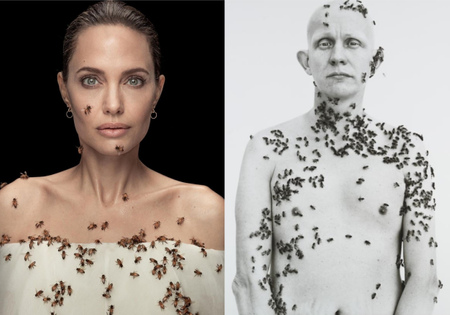
An unusual photo shoot by photographer Dan Winters was inspired by a 1981 portrait of an insect-clad California beekeeper.
In this way, Jolie, Winters and National Geographic tried to draw attention to the problem of reducing the world’s bee population. The image went viral and garnered over 2.5 billion views.
“We are so worried about every event in the world that many of us feel overwhelmed by the bad news… But we can fix one bad news,” Jolie said.
The bad news Jolie is talking about is the mass extinction of bees, which is a worldwide problem. Thus, in the United States alone, the number of bee colonies has decreased by 40% in the last year alone, making it the largest insect death in all observations. In the first half of 2019, about 500,000 honey bees died in Brazil. The Food and Agriculture Organization of the United Nations estimates that approximately 40% of the world’s pollinators are endangered. According to statistics, in Ukraine alone, 45-50 thousand bee families die every year.

Why do bees extinct and why is it important?
Pesticides are the main cause of catastrophic bee mortality. Particularly dangerous are neonicotinoids, chemicals that affect the central nervous system of insects. Pesticides of this type are soluble in water, go deep into the soil, as a result of which they are absorbed by the whole plant. They are called “systemic”, i.e. turn the whole plant into a source of poison: roots, stems, leaves, flowers and pollen. Neonicotinoids are often used to treat seeds before planting or sowing. From 2018, the use of neonicotinoid pesticides is banned in the EU. Bee numbers are also declining due to the spread of parasites, diseases and natural enemies of bees, monoculture farming methods, reducing the natural forage of bees, destroying forests that provide them with habitat, and the adverse effects of climate change.
Bees perform the most important function for agriculture and for the whole ecosystem: pollination of flowering plants. Bees are involved in the production of a third of the food we eat. They pollinate three of the four most important food crops for humans, and more than a third of the world’s agricultural land owes its existence to these selfless workers. Biologists estimate that up to 80% of commercial plantations depend on the services of these striped insects.

This is what supermarket shelves with and without pollinators look like
With the disappearance of bees, fruits and vegetables disappear, without meadow grasses, which also pollinate bees, meat animals die. Cotton and clothes made of it will disappear. These threats are not hypothetical – in 2012, when a third of the bee population died in Scotland, prices for 80% of food tripled. Bees are an indicator of life on Earth. When dying, bees predict the same fate for humanity.
But as long as humanity exists, there is a choice, and there are ways to solve this problem
Flower fields in the middle of the city, beehives on billboards and Instagram bees: how bees are saved all over the world
Angelina Jolie is not only an actress and model for photo shoots – she has been a UN Goodwill Ambassador for 17 years supporting local communities in Cambodia in their fight against deforestation, which threatens bees, other animals and the ecosystem in general. This year, Jolie also became the godmother of the Women For Bees program, launched by Guerlain and UNESCO. The program aims to ensure women’s social and economic independence through beekeeping, raising awareness of the importance of all species of bees and their protection. By 2025, the program envisages the installation of 2,500 hives in 25 UNESCO biosphere reserves and an increase in bee populations to 125 million.
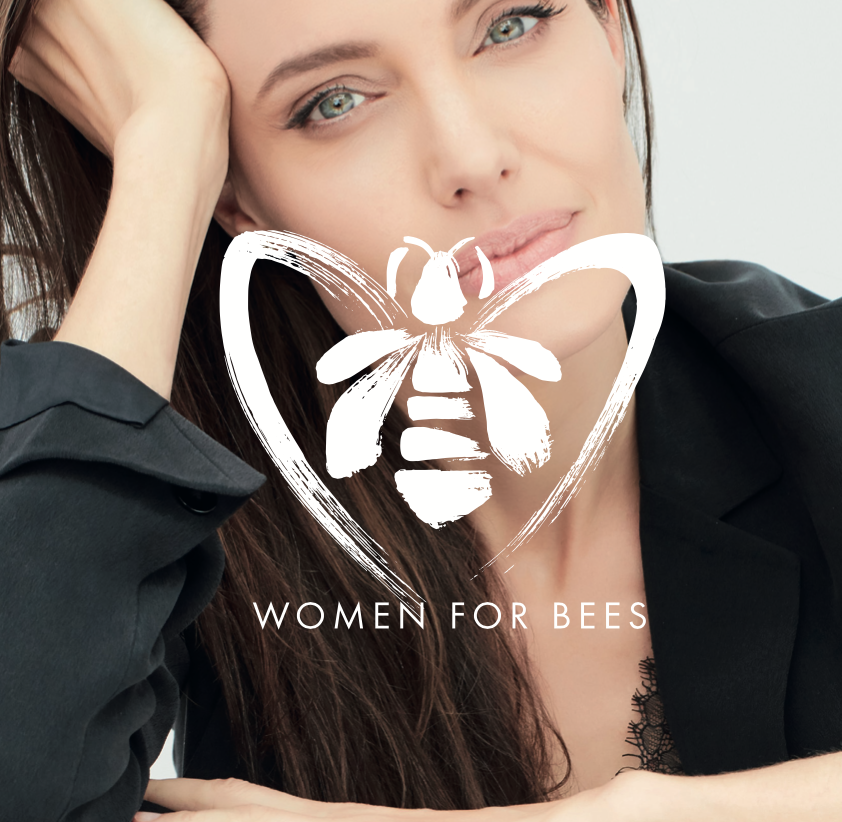
The star of “Escape from Shawshank” actor Morgan Freeman himself became a beekeeper. He turned 50 hectares of his ranch in Mississippi into a bee sanctuary. “We don’t even understand that bees are the basis of everything that grows on the planet,” he said. The 26 hives that Freeman placed on his ranch are not for food. Freeman stressed that he did not want to break the hives or collect the honey they give. The actor only feeds the bees, provides them with sugar and water and plants flowering trees and plants for them.
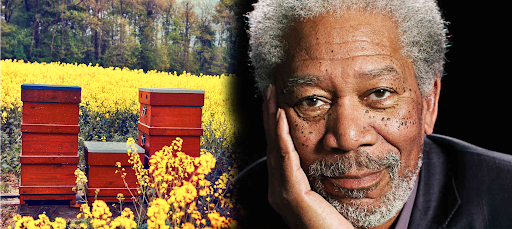
Erica Thompson is an ordinary Texas resident. Wild bees sometimes build hives in places where they are not very happy or dangerous to be. Erica comes to the rescue. She relocates the bees to a new hive and transports them to her apiary. The bees in the photo below have lived in the barn for at least two years. The owners of the barn were worried about the huge nest and called Erica to save the bees. In most cases, unfortunately, Texas residents call disinfectants. The girl talks about her activities on her Instagram page.
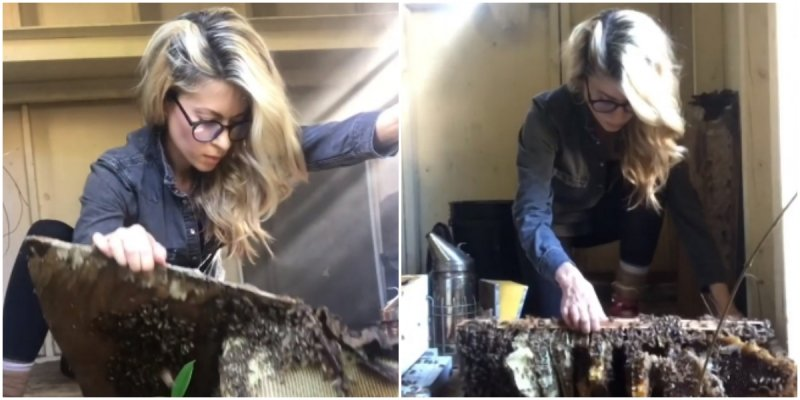
The topic of bees brought together in Germany biologists, officials, large corporations and ordinary citizens. An example of how to act is the Save the Bees petition, which was signed by 1.75 million people in Bavaria. The people’s initiative, which formed the basis of the petition, became law in July 2019. The new law requires more farms that grow organic products, more wild onions and fewer pesticides – their use is now banned in protected areas. The life of every bee in Germany is also protected by law. If it is proven that a person intentionally injured or killed a bee, damaged or destroyed a wild bee nest, a fine of €5000 to € 65,000 will have to be paid, depending on the region of the country.
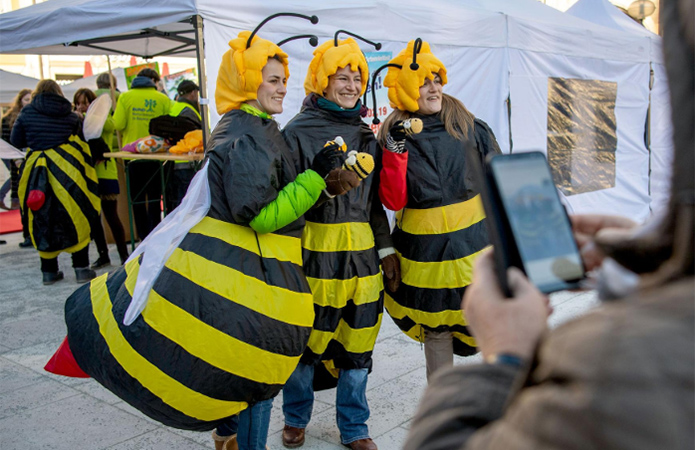
Activists of the action to launch the petition “Save the bees”, photo by National Geographic
The love of bees is found in this country in the most unexpected places: free bags of seeds for plants that love wild bees are regularly distributed by large German grocery stores. And the German Ministry of Agriculture has launched a special “bee” mobile application for smartphones, which tells how ordinary people can help insects survive in the city – for example, less to mow the grass and create more places in their gardens suitable for their home. In many German cities, the roofs of hundreds of houses have been converted into apiaries. Bee hives have even appeared on the roof of Berlin Cathedral! According to experts, urban conditions are even more suitable for beekeeping than agricultural land: the choice of honey plants is much wider, and the average temperature is a couple of degrees higher than outside the city.
In Denmark, the law obliges owners of large areas of agricultural land to sow 5% of their land with wildflowers for bees. Something similar is practiced in France. It is worth noting that the governments of these countries support many green initiatives, so they thrive throughout the country. And the taxation of pesticides introduced in Denmark in the 1990s for their impact on the environment is one of the oldest and toughest in Europe.

The unique project was launched by a French charity and the non-profit organization Bee Funder. They created the Instagram account of the world’s first bee-blogger. There she tells people about environmental issues, accompanied by original photos against the backdrop of seascapes or cityscapes, various household chores or hobbies. The bee V. draws, meditates, travels, prepares food, exercises, rejoices and mourns, celebrates holidays with us and misses people during the coronavirus crisis. The idea of the authors of the project is simple and at the same time extremely important: to draw the attention of as many people as possible to the issue of global bee extinction, and to make them think seriously about ways to preserve insects. The number of subscribers to the @bee_influencer account has exceeded 270,000 and continues to grow steadily.
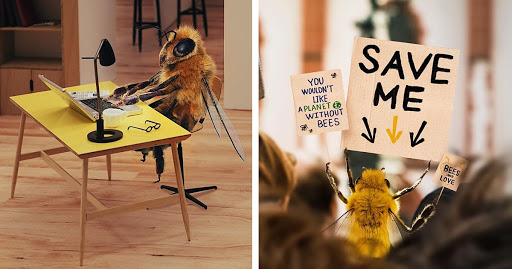
Preservation of bee populations in megacities has become a big problem. The American company Best Bees Company installs hives in commercial and residential buildings – everywhere, from roofs to gardens near houses. Its staff then uses an advanced software system to monitor and study the condition of all bee colonies. These data are passed on to researchers from Harvard University and the Massachusetts Institute of Technology to help them better understand the situation of insects.
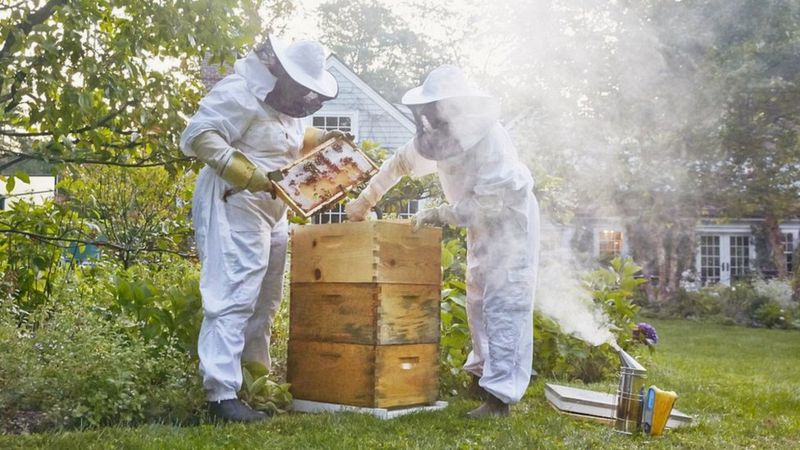
The international research and design laboratory SPACE10 has created a free tool for designing Bee Home hives, which allows anyone and anywhere to support their local pollinators and take measures to preserve the world’s biodiversity. After the user of the program selects the design, assembly instructions are created. Then you can bring them to your local producer or workshop and build your own city house for bees.

Perennial grasses and flowers have been planted instead of lawns in the British town of Rotherham. The River of Color scheme involves long-flowering flowering plants, the nectar, and seeds of which are a source of food for many pollinators, birds, and even some mammals. This innovation has also allowed local authorities to save £ 25,000 a year on mowing lawns.

In Stuttgart (Germany), inventors came up with a new option for landscaping – 10 “mobile” trees in tubs, along with wildflowers, which are adored by urban bees. Walking forest (mobile structures containing trees, shrubs, and seats), planted in special wheelbarrows, are moved between different streets and neighborhoods from May to September.

In the Dutch city of Utrecht, local authorities have decided to combat the extinction of honey bees by landscaping the roofs of 316 bus stops so that bees can collect nectar from flowers. The ceilings were planted with the succulent plant sedum. Green roofs help protect bee and bumblebee populations and serve as filters for fine dust and store rainwater.

Large corporations are also concerned about the preservation of the honey bee population. For example, the Swedish McDonald’s created the most miniature replica of its restaurant and placed a beehive in it. Thus, the company supported the initiative of some Swedish restaurants of the chain, which install beehives on the roofs. McDonald’s has created another project in this direction in cooperation with the outdoor advertising operator JCDecaux. Together, they turned the back of billboards into bee hotels.

One of the reasons for the extinction of honey bees is varroa mites, which parasitize on their body and transmit the DWV virus, which causes the syndrome of the destruction of bee colonies. The University of Texas at Austin invented a way to protect bees from viruses and mites by manipulating the expression of their genes. Scientists have “taught” bacteria living in the intestinal microflora of insects to protect their hosts by modifying their genomes. Experts shared the results of the genetics experiment in the Science magazine.
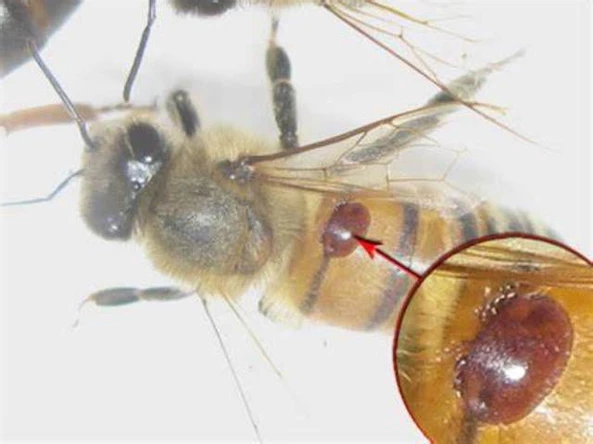
A bee with a parasite clinging to it
British 92-year-old biologist David Attenborough has fought all his life for animals and the environment. He calculated that humanity will have to live on the planet for only four years if the bees disappear. David Attenborough suggested that the only effective way to help bees survive is to feed them. To do this, just plant flowers on the balcony or near the house, or make a sweet syrup. The biologist suggested mixing one tablespoon of water with two tablespoons of sugar and leaving the mixture outside. According to him, this will allow exhausted bees to get food and fly to the hive, and therefore not die of fatigue and helplessness.
(Interested in the films by the most famous naturalist on the planet and the author of the most popular documentaries about nature? We’ve written about Attenborough’s movie about climate change and possible solutions to this global threat here).
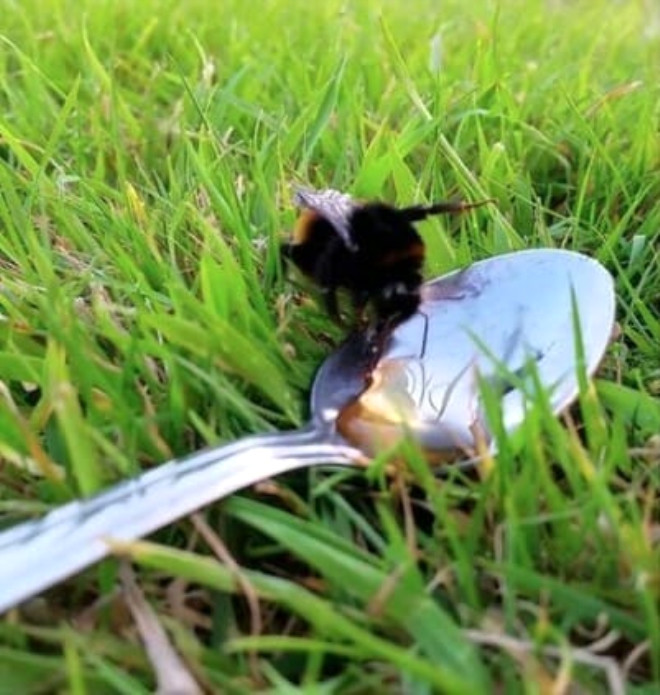
Try to help preserve the population of bees and chemists. So, in Spain, the pesticide from beer waste and manure is created: it does not harm nature and the person. In a new study, researchers at the Institute for Agricultural Research and Development at the University of the Basque Country in Spain used a by-product of spent beer grain and fresh cow manure for a potential method of soil disinfection, maintaining healthy soil microorganisms and increasing crop yields. Scientists mixed both components with rapeseed meals. It turned out that this mixture helps farmers fight nematodes – harmful soil parasites that destroy plant roots.
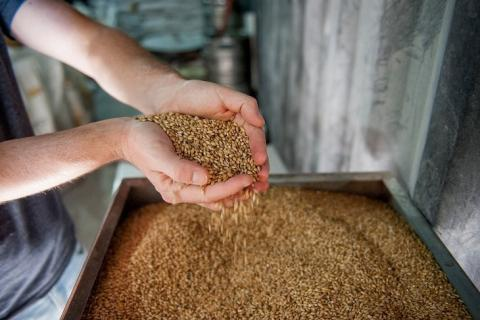
As we’ve written here, almost everything we eat is pollinated by insects. Most pollinators in Europe are wild bees that live on steppe slopes and meadows.
In recent years we can say precisely how much a hectare of forest costs. I mean, in terms of water purification and the existence of pollinators on which the harvest depends (for example, bees). You may read about the ecosystem services here.



